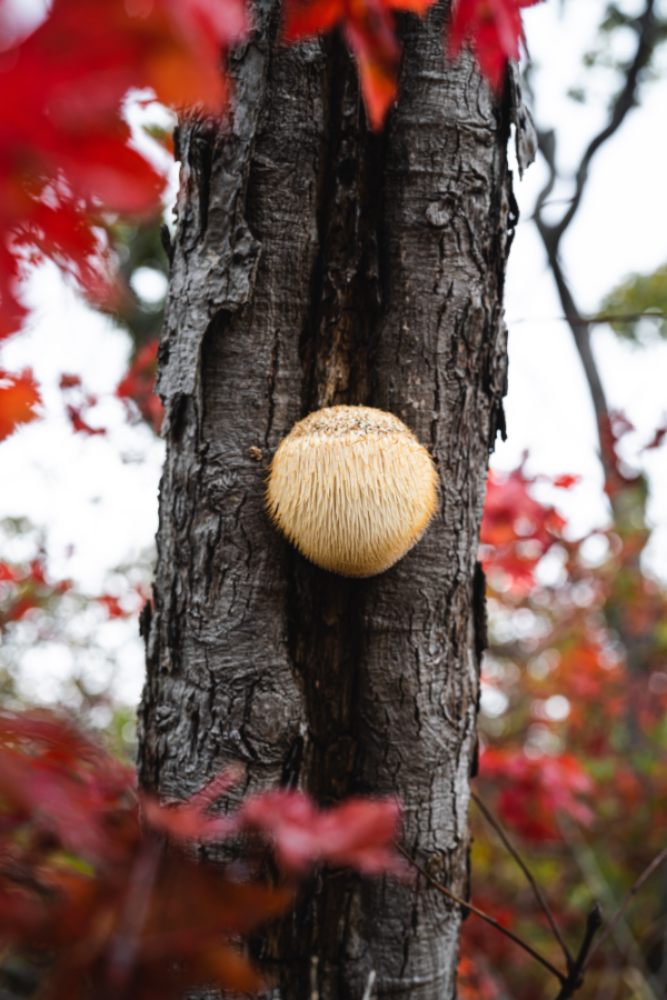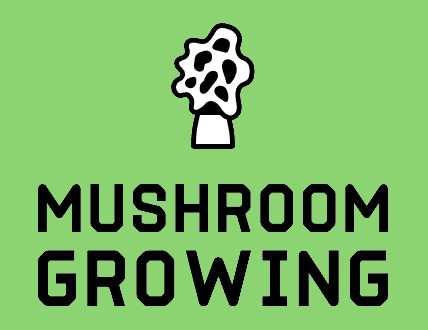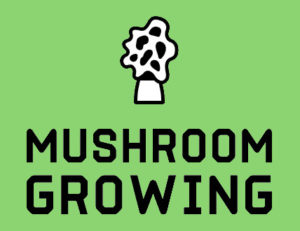What Is Lion’s Mane Mushroom?
Lion's mane, also known as Hericium Erinaceus, H. abietis, or Yama-no-ki in Japanese, and its a traditional Chinese medicine and culinary mushroom.
It is also known as the Hedgehog Mushroom, Bearded Hedgehog Mushroom, Satyr's Beard, Pom Pom Blanc, Monkey Head, and Bearded Tooth Fungus.
Lion's Mane Mushrooms, like the name implies, have a shaggy appearance and their teeth or needles are the gills, which cascade downwards as they expand, giving them a shaggy look.

Health Benefits of Lions Mane Mushrooms
Lion's mane mushroom has been used for centuries in the traditional Chinese medical system, It has been used as both a medicinal and culinary mushroom in traditional Japanese cuisine for centuries and Chinese medicine, where it is considered to be one of the 50 fundamental herbs.
Some of the health benefits include:
- An effective nootropic, or cognitive enhancer.
Lion's Mane mushroom is one of the best medicinal mushrooms, as it contains a substance known as erinacine. Erinacine stimulates the Nerve Growth Factor (NGF) of cells to induce their development and thus encourages new brain cell formation.
- As supportive therapy in dementia and Alzheimer's disease patients
Lion's Mane is also known to help improve age-related memory loss
- Boost immune response.
- Protect against free radicals & certain cancers.
- Hepatoprotection
- Anti-tumour
- Anti-inflammatory and cardiovascular protection.
- Lower blood pressure and cholesterol,
- As a folk remedy for insomnia and anxiety. Improves sleep by increasing melatonin levels.
Lion's mane mushroom is not a stimulant nor does it have psychedelic properties though it has been anecdotally reported to cause psychedelic effects.
How to grow Lions Mane Mushrooms at Home
Lion's mane mushroom is available online or in specific Asian markets. However, you can grow them at home.
Growing Lions Mane Cheaper is cheaper than buying supplements.
You can grow lion’s mane mushrooms by either:-
- Growing from spores on a sterile substrate
- Grow the mushrooms from a kit, which is a lot more expensive but also easier and it'll produce a higher yield.
Growing From Spores on a Sterile Substrate
Special equipment needed:
- Pressure cooker (or rice cooker with steaming function to sterilize the substrate and eliminate any pathogens (mix of sawdust or rice bran)
- Sterilized potting mix (50% peat, 25% vermiculite, 25% coco coir), which you can get from your local garden centre. Make sure it's organic soil. It should be moist.- Plastic bags
- Sterilized substrate (a mix of sawdust and coco coir), which you can also get from your local garden centre
Steps:
1) Prepare the containers you'll use to grow the mushrooms in. Use plastic bottles or bakery cupcake holders with holes on the sides for airflow, just to be safe.
2) Fill each bottle with soil until it's about three-quarters full. You can also use wood chips or cardboard egg cartons for this step, provided they are cut open to allow airflow and covered in soil.
3) Add a thin layer of sterilized water on top of the substrate. This allows the mycelium to grow and easily penetrate through the substrate.
4) Cut a hole on one of the corners of the plastic bag containing the sawdust/coco coir mix large enough for your hand to fit in. Gently spread it open inside of the container so that half is on top of each substrate you've filled.
5) Scoop a small amount of Lion's Mane spore solution from the bag, using a knife to pick them up from the bag. Then spread it evenly around the substrate. Do not touch them with your hands as this will damage the spores' ability to germinate and they won't produce any mycelium.
6) Cover the top of the substrate with more soil, making sure it's level.
7) Spray sterilized water on top of the substrate to moisten them again. This will make humidity levels increase in the bottles. 8) Cover each bottle with a plastic bag. Punch some holes on opposite sides at the bottom of the bag for some airflow.
9) Place the bottles in a dark room with temperatures between 18 and 27 degrees Celsius, and the humidity levels should be around 70%.
10) After two weeks, you should notice white spots on top of the soil or substrate. This means that the spores already produced mycelium and they're ready to produce mushrooms soon. However, it can take up to four weeks before mushrooms start growing.
Mushrooms will grow for around two months and they will eventually stop producing spores and collapse. They should be dried quickly after harvesting them by hanging them upside down in a dark dry room, which will make the spores fall off naturally. This way you'll get more flushes of mushrooms as they'll continue to produce spores.
Growing from a Mushroom Kit
Special equipment needed
- Plastic bags
- Sterilized substrate (a mix of sawdust and coco coir), which you can also get from your local garden centre
Steps:
1) Prepare the containers you'll use to grow the mushrooms in. Use plastic bottles or bakery cupcake holders with holes on the sides for airflow, just to be safe.
2) Fill each bottle with soil until it's about three-quarters full. Add a thin layer of sterilized water on top of the substrate. This will allow growth and easily penetrate through the substrate.
3) Punch some holes on opposite sides at the bottom of each plastic bag containing substrate and place them in a dark room with temperatures between 18 and 27 degrees Celsius, and humidity levels around 70%.
4) After two weeks, you should notice white spots on top of the soil or substrate. This means that the spores already produced mycelium and they're ready to produce mushrooms soon. However, it can take up to four weeks before mushrooms start growing.
5) Mushrooms will grow for around two months and they will eventually stop producing spores and collapse. They should be dried quickly after harvesting them by hanging them upside down in a dry dark room, which will make the spores fall off naturally. This way you'll get more flushes of mushrooms as they'll continue to produce spores.
It is illegal to grow psilocybin mushrooms in Australia and can result in penalties such as prison time and heavy fines. We do not condone the illegal growing or use of this guide for anything other than informational purposes.
Will you be growing your own Lions Mane?
Growing Lion's Mane mushrooms is easy and can be done at home as long as you follow the instructions carefully. They're very nutritious, containing high levels of B vitamins and iron, making them a perfect addition to your cooking.
Have you grown Lion's Mane mushrooms before?
Let us know how it went in the comments!

